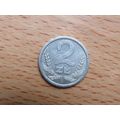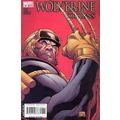Larne, Co. Antrim, N Ireland - Chaine Park - Dexter postcard c.1960s
- Condition : Used
- Dispatch : 2 Days
- Brand : None
- ID# : 136308731
- Quantity : 1 item
- Views : 2765
- Location : United Kingdom

- Seller : justthebook (+1704)
- Barcode : None
- Start : Sun 11 Jan 2015 06:33:21 (EDT)
- Close : Run Until Sold
- Remain : Run Until Sold
Checks/Cheques
 for 1 item(s) edit
for 1 item(s) edit
Shipping Calculator
More Listings from This Seller view all
Seller's Description
- Postcard
- Picture / Image: Larne, Co. Antrim, Northern Ireland - Chaine Par from where the Mull of Kintyre can be seen
- Publisher: NPO Dexter Fotocolor / Ektachrome by T. McIlroy
- Postally used: no
- Stamp: n/a
- Postmark(s): n/a
- Sent to: n/a
- Notes / condition: very light mark
Please ask if you need any other information and I will do the best I can to answer.
Image may be low res for illustrative purposes - if you need a higher definition image then please contact me and I may be able to send one. No cards have been trimmed (unless stated).
------------------------------------------------
Postage & Packing:
Postage and packing charge should be showing for your location (contact if not sure).
No additional charges for more than one postcard. You can buy as many postcards from me as you like and you will just pay the fee above once. Please wait for combined invoice. (If buying postcards with other things such as books, please contact or wait for invoice before paying).
Payment Methods:
UK - PayPal, Cheque (from UK bank) or postal order
Outside UK: PayPal ONLY (unless otherwise stated) please. NO non-UK currency checks or money orders (sorry).
NOTE: All postcards are sent in brand new stiffened envelopes which I have bought for the task. These are specially made to protect postcards and you may be able to re-use them. In addition there are other costs to sending so the above charge is not just for the stamp!
I will give a full refund if you are not fully satisfied with the postcard.
----------------------------------------------
Text from the free encyclopedia WIKIPEDIA may appear below to give a little background information (internal links may not work) :
*************
Larne or Lairne (from Irish: Latharna, the name of a Gaelic territory)[3][4][5] is a seaport and industrial market town, as well as a civil parish, on the east coast of County Antrim, Northern Ireland with a population of 18,323 people in the 2008 Estimate.[6] As of 2011, there are about 32,000[6] residents in the greater Larne area. It has been used as a seaport for over 1,000 years, and is today a major passenger and freight roll-on roll-off port.[7] Larne is twinned with Clover, South Carolina which has named one of its schools, Larne Elementary School,[8] after Larne. Larne is administered by Larne Borough Council. Together with the neighbouring district of Carrickfergus and part of Newtownabbey, it forms the East Antrim constituency for elections to the Westminster Parliament and Northern Ireland Assembly.
The coastal area around Larne has been inhabited for millennia, and it thought to have been one of the earliest inhabited areas of Ireland, with these early human populations believed to have arrived from Scotland via the North Channel. The early coastal dwellers are thought to have had a sophisticated culture which involved trading between the shores of the North Channel and between other settlements on the coasts of Scotland. Archaeological digs in the area have found flintwork and other artefacts which have been assigned dates from 6000 BC onwards. The term Larnian has even been coined by archaeologists to describe such flintworks and similar artefacts of the Mesolithic era (and one time to describe Mesolithic culture in Ireland as a whole).[9][10][11]
The oldest recorded name for Larne Lough is the Irish Loch Ollarbha (loch meaning ""inlet"") and Inbhear nOllarbha (inbhear meaning ""rivermouth""). Ollarbha is the Irish name for the Inver River, which flows through Larne.[citation needed] It is also recorded that the Roman Emperor Serverus described how, in 204AD, a Roman slave galley bound for Scotland was blown off course and took shelter in a place that they called Portus Saxa (""Port of the Standing stones"") – this is thought to have been Larne Lough. The ancient Greeks also had knowledge of the Antrim Coast and Ptolemy, the astronomer and geographer of the 2nd century AD, referred to Islandmagee on one of his maps.
According to legend, Lathar, daughter/son [?] of Úgaine Mór, was given a small territory by her/his father, which stretched along the Antrim coast roughly from Glenarm to the Inver River – this territory was thus called Latharna (the lands of Lathar).[citation needed] The area where the modern town sits was known in Irish as Inbhear an Latharna (""rivermouth of Latharna"") and was later anglicised as Inver Larne or simply Inver. The territorial name Latharna was only applied exclusively to the location of the present town in recent centuries.
There was Viking activity in the area during the 10th and 11th centuries AD. Viking burial sites and artefacts have been found in the area and dated to that time.[12] Ulfreksfjord was an Old Norse name for Larne Lough. According to the Norse historian Snorri Sturluson, Connor, King of Ireland, defeated Orkney Vikings at Ulfreksfjord in 1018. This was later anglicised as Wulfrickford, Wulfrichford and Wulvricheford. Other Norse-derived names for Larne Lough and the surrounding area are found in various records. They include Woking's Fyrth, Wolderfirth, Wolverflete and Olderfleet. The only one that survives is Olderfleet. The ending -fleet comes from the Norse fljot, meaning ""inlet"".[13] Older- may come from the Norse oldu, meaning ""wave"".[13] However, P.W. Joyce in his Irish Names of Places suggests that it comes from Ollarbha, the Irish name for the river.[14]
In the 13th Century the Scots-Irish Bissett family built Olderfleet Castle at Curran Point. In 1315 Edward the Bruce of Scotland (brother of Robert the Bruce, King of Scotland) landed at Larne with his 6000 strong army en route to conquer Ireland, where Olderfleet Castle was of strategic importance. Edward saw Ireland as another front in the ongoing war against Norman England.
In 1569 Queen Elizabeth I, Queen of England and Ireland, appointed Sir Moyses Hill as the governor of Olderfleet Castle. It was seen as strategically important for any Tudor conquest of Ulster. Following the 17th century Union of the Crowns of Scotland, England and Ireland under James VI & I many more settlers would have arrived to Ulster via Larne during the Plantation of Ulster. The area around County Antrim itself, however, was not part of the official 17th century Plantation; instead many Scottish settlers arrived in the area through private settlement in the 17th century (as they had also been doing for centuries before).
During the 18th century many Irish emigrated to America from the port of Larne. A monument in the Curran Park commemorates the Friends Goodwill, the first emigrant ship to sail from Larne in May 1717, heading for Boston, New England in the modern United States. Boston's long standing Irish roots can be traced to Larne. The town is documented as being the first in county Antrim to be taken by United Irishmen during the ill-fated rebellion of 1798. The rebels from this area (almost entirely Presbyterian) filled Larne and engaged the government forces around 2am on the morning of the 7th of June. This surprise attack drove the garrison to flee the town, at which point the rebel force marched off to join up with McCracken and fight in the Battle of Antrim.[15]
In 1914, Loyalists opposed to the Home Rule Act 1914 prepared for armed resistance. In an episode known as the Larne Gun Running German weapons and ammunition were transported into the port of Larne in the dead of night and distributed throughout Ulster.[16] This event marked a major step in cementing the right to Ulster Unionist self-determination, with the recognition of such a right ultimately leading to the creation of Northern Ireland.
Larne throughout the course of The Troubles had a significant paramilitary presence in the town, mostly through the presence of the Ulster Volunteer Force (UVF) and Ulster Defence Association (UDA).[citation needed] For further information see UDA South East Antrim Brigade.
The town suffered a number of bomb attacks during The Troubles, notably including a large car bomb at the King's Arms hotel[17] in 1980 that caused damage to the main shopping areas, for which the PIRA claimed responsibility.This incident was raised in Parliament at the time.[18]
Incidents which involved fatalities
- 16 September 1972 Sinclair Johnston a Protestant UVF member, was shot by the Royal Ulster Constabulary during street disturbances in the town.[19]
- 20 November 1974:Kevin Regan died from his injuries received in a UVF attack five days before on Maguires bar on Lower Cross Street.[20]
- 6 February 1975:Colette Brown a Catholic was found by the side of the Killyglen Road after being shot by loyalists.[21]
- 8 September 1975:Michael O'Toole a Catholic, died from his injuries sustained in a loyalist booby trap bomb attached to his car two days previously.[22]
- 24 August 1980: Rodney McCormick a Catholic and Irish Republican Socialist Party member, was shot dead by the Ulster Defence Association (UDA) in the Antiville area of the town.[23]
- 11 July 2000: Andrew Cairns a Protestant and alleged UVF member, was killed by members of the UDA at an eleventh night bonfire celebration in a suspected loyalist feud at Boyne Square.[24]
Larne sits on the western side of a narrow inlet that links Larne Lough to the sea. On the eastern side of the inlet is a peninsula called Islandmagee. To the west of Larne is the ancient volcanic formation of Antrim Plateau, with its glaciated valleys scenically sweeping down to the sea the to the north of Larne in what are known as the Glens of Antrim. Larne is 25 miles from the Scottish mainland, with stunning views across the North Channel towards the Mull of Kintyre, Rhins of Galloway, Islay and Paps of Jura often visible from the Larne area – this proximity to Scotland has had a defining influence on Larne's history and culture.
The town is within the small parish of the same name. Like the rest of Ireland, this parish has long been divided into townlands, whose names mostly come from the Irish language. Over time, more rural townlands have been built upon and they have given their names to many roads and housing estates. The following is a list of townlands within Larne's urban area, alongside their likely etymologies:[25]
- Antiville (likely from an Tigh Bhile meaning ""the house of the old tree"")
- Ballyboley (likely from Baile Buaile meaning ""townland of the booley/dairy place"")
- Ballycraigy (likely from Baile Creige meaning ""townland of the rocky outcrop"")
- Ballyloran (likely from Baile Loairn meaning ""Loarn's townland"")
- Blackcave North
- Blackcave South
- Curran and Drumalis (likely from Córran meaning ""crescent"" and Druim a' Lios meaning ""ridge of the ringfort"")
- Greenland
- Inver (likely from Inbhear meaning ""rivermouth"")
Scots street names
Many streets in Larne end in Brae which comes from the Lowland Scots for Hillside. Here are just 2 of many.
- Whitla's brae
- Casements brae
type=printed
city/ region=larne
period=post-war (1945-present)
postage condition=unposted
number of items=single
size=standard (140x89 mm)
Listing Information
| Listing Type | Gallery Listing |
| Listing ID# | 136308731 |
| Start Time | Sun 11 Jan 2015 06:33:21 (EDT) |
| Close Time | Run Until Sold |
| Starting Bid | Fixed Price (no bidding) |
| Item Condition | Used |
| Bids | 0 |
| Views | 2765 |
| Dispatch Time | 2 Days |
| Quantity | 1 |
| Location | United Kingdom |
| Auto Extend | No |




















